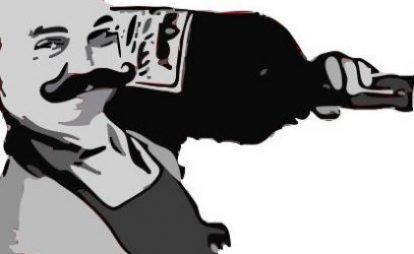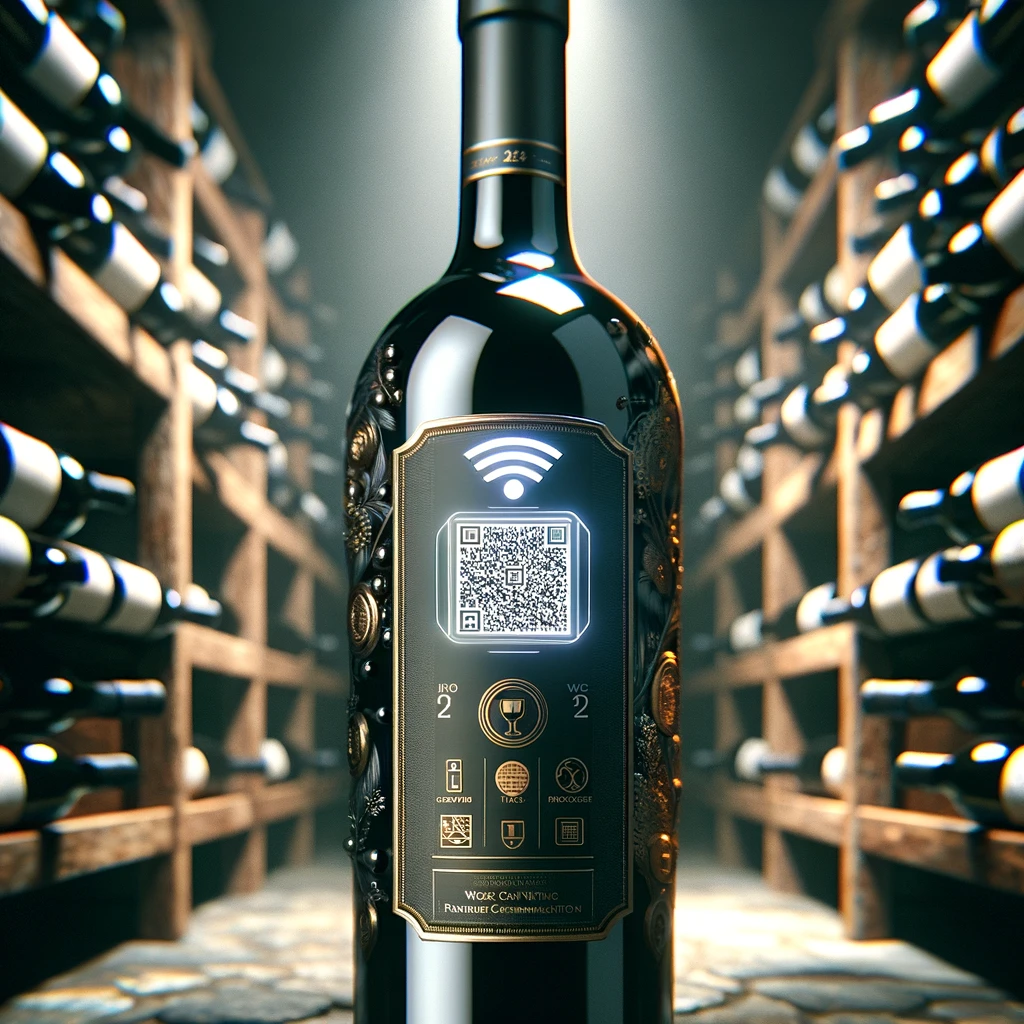The beginning of a New Year always comes with plenty of resolution and marks the coming into force of new laws – among other things. 2022 is no different, so we’ll talk about both together with the latest in the never-ending story that is the classification of St Emilion. Welcome to the latest JollyCellarMaster Weekly:
Bordeaux Classification Disputes, QR Codes and Cold Turkeys
Dry January and Minimum Prices
Generally, back in the days when I lived in London January was always a bit of a depressing month. Not only did people have to face the credit card bill for their Christmas spending. Many also decided to go cold turkey on alcohol after the excesses of Christmas parties. It is that in this vein, the Dry January campaign promotes a full month of abstaining from alcohol to improve public health. The official campaign appears to be a relatively recent thing – some say it sprang up around 2014 and the Swiss chapter was only launched last year for the first time for instance – but obviously it had been in the making for a little longer.
Personally, I’m not a fan of extremes, so I’m not entirely sure I should take an entire month off. While I drink my fair share of wine on an almost daily basis, though mostly as a glass of wine accompanying a meal, I don’t really binge on alcohol. Thus, I don’t consider it necessary to punish myself with a month without wine though I appreciate that the campaign isn’t about castigating oneself. Please don’t get me wrong, I do relate to the idea of cutting things out to appreciate them again afterwards or the seasonal consumption of, for example, sweets, fruit or vegetables. To show it’s not all talk, I almost every year do keep lent during the forty days before Easter (not for religious reasons but for the sake of doing it), abstaining from things I think I should go without for a while (which has been alcohol in the past though it’s unlikely to make the list this year when I’m in the middle of the WSET diploma…).
Anyway, to each it’s own and for some it might be a good idea to this; yet, it might an even better idea not to overdo it during the other eleven months of the year – drink with moderation, you know. It’s interesting to see, however, how it is used by the industry to promote alcohol free wines. Is the whole dry January movement then nothing else but a marketing idea concocted by the industry to promote a niche product? You know, just a little bit like Valentine’s Day to sell cards and chocolates. Well, they would probably go on a bit too far, but don’t we all like a little conspiracy theories?!?
And on a related note, I haven’t really had and alcohol-free glass of wine I could say I liked, but I’m sure there must be some decent stuff out there, right? Well, maybe January indeed is the month to give those a try (feel free to point me in the right direction), but I for myself make sure I’ll also add a glass of traditional red once in a while.
Another approach to enjoy wine in moderation could come in the form and shape of minimum prices. Ireland is the latest country to introduce minimum prices for alcohol. It joins Scotland, Wales, and parts of Australia, Russia and Canada as a new law established drove the price of the cheapest bottle of wine up to €7.40 (or £6.20). The actual minimum price per bottle is determined by the amount of alcohol of each bottle with 10 cents due per gram alcohol. The idea is to “reduce serious illness and death from alcohol consumption,” according to the country’s Health Minister Stephen Donnelly. Healso noted in a statement that the pricing measure has “worked in Scotland”, where minimum alcohol pricing was introduced in 2018, and led to a decline in drinks sales.
While I don’t want to get into the tax considerations of Ireland and other countries on the matter, I admit that I see some sense in doing this for public health reasons but understand that it could be seen differently. Yet, considering that the average price for a bottle of wine in German supermarkets and discounters (which account for 3/4 of the German off-trade market) is only €2,92, it might be worth contemplating on whether alcohol is too cheap.
Information on Wine Labels
While we are talking about new laws coming into force, after years of delays in the forms of postponements, suspensions and discussions, new labelling laws will become applicable from 1 January 2023. That’s according to the regulations of the new Common Agricultural Policy and at the end of a transitional period, during which producers will have time to adapt their products. From that point in time on wine labels will also need to show the nutritional values and the list of ingredients. Consumers will be able to access information through a QR code that will take them to the full electronic label.
Producers will be able to register their products and insert on the corresponding page of the U label digital platform all the required information plus any other information on the product, process and on the conscious and moderate consumption of alcohol.
The additional information that in the future will be able on wine labels is naturally a big concern for the industry, especially since the European Beating Cancer Plan that is due to be discussed in the EU Parliament next month proposes a general warning on labels on the harmful nature of alcohol. Health warnings similar to what is already the norm for tobacco products will certainly have a massive impact but even a general warning is considered to have fatal consequences for the industry.
Which takes us back to the argument made above: are health warnings or initiatives like the Dry January campaign the way forward to improve public health? Or should there be a minimum price? Many things have been tried (and failed like the American prohibition) and while we should be talking about the abuse of alcohol and its serious consequences, such conversations unfortunately seem to take a rather one-sided view and slightly aggressive tone. So, can’t we simply have an honest and decent conversation about it?
Big Trouble in St Emilion – Another Sequel
If it was a movie, even the greediest producer would have realised that nobody wanted to see another episode of the once popular installation that was the St Emilion Classification.
The different classification systems of the Bordeaux region already can be quite confusing in itself. It all started with the Medoc classification of 1855, the year when Sauternes Barsac got their own system. 1959 saw the official classification of Graves, whose wines were initially classified in 1953. St Emilion started its own classification in 1955 and is different as it is re-evaluated every ten years or so as opposed to the others, which have remained (largely) unaltered over the years.
If you look at the different evaluations and classification into a three-tier system (sort of), for most of the time, Cheval Blanc and Ausone sat alone in the top category. As you can imagine, such things never go without a fuss and as part of the last evaluation in 2012, Chateau Angelus and Pavie joined the two as Premier Grand Cru Classé ‘A’ (all 82 classified chateaux are at least Grand Cru, which could be considered a bit confusing, I suppose). Since then things have gone worse and culminated in last year’s announcement of Château Ausone und Cheval Blanc to leave the classification system.
If that wasn’t enough, later last year accusations surfaced against the owners of Château Angélus and Château Trotte Vieille in respect of alleged rigging entrance to the St Emilion classification system and their rankings within it. It was said that the intention was not only to improve their reputation but most probably to unfairly inflate the price of their wines as a direct result. Hubert de Boüard of Angelus hassubsequently been found guilty of “unlawful bias” in his role in the 2012 Saint-Emilion classification on Monday and fined €60,000.
And just in time for the end of the year, the two châteaus of Château Croix de Labrie and Château Tour St.-Christophe filed an emergency legal action against the government agency INAO that oversees appellations, regarding the 2022 ranking.
Well, that still isn’t the end of the story: last week, Château Angelus’ co-owner and general manager Stéphanie de Boüard-Rivoal announced that the estate had withdrawn its application for the 2022 classification as well.
Will this mean an end to the controversies surrounding the classification? Probably not.
—
And that’s all for this week but if you have an interesting story to tell or simply want to chat about wine as a guest on the Podcast, connect on Twitter or drop me a line. And if you want to stay in the loop about things happening at the JollyCellarMaster and the world of wine, make sure you sign up to our newsletter.
—
Disclaimer: As always, I’d like to be completely transparent about affiliations, conflicts of interest, my expressed views and liability: Like anywhere else on this website, the views and opinions expressed are solely those of the original authors and other contributors. The material information contained on this website is for general information purposes only. I endeavour to keep this information correct and up-to-date, I do not accept any liability for any falls in accurate or incomplete information or damages arising from technical issues as well as damages arising from clicking on or relying on third-party links. I am not responsible for outside links and information is contained in this article nor does it contain any referrals or affiliations with any of the producers or companies mentioned. As I said, the opinions my own, no liability, just thought it would be important to make this clear. Thanks!




